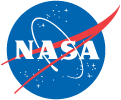Version 3 GEOSCCM
Version 3 of the GEOSCCM model includes the GEOS-5 atmospheric general circulation model
and the "Combo CTM" tropospheric/stratospheric chemical package developed within the
Global
Modeling Initiative (GMI) program (Duncan et al., 2007). The Combo CTM chemistry combines
tropospheric and stratospheric mechanisms and includes 117 species, 322 chemical reactions,
and 81 photolysis reactions. A detailed description of tropospheric O3-NOx-hydrocarbon
chemistry in included in the tropospheric chemistry package. The stratospheric package is
described in Kinnison et al. (2001) and Douglass et al. (2004). The Combo CTM simulates
the radiative and heterogeneous chemical effects of sulfate, dust, sea salt, organic
carbon and black carbon on tropospheric chemistry.
Citations:
Douglass, A.R., R.S. Stolarski, S.E. Strahan, and P.S. Connell (2004), Radicals and
reservoirs in the GMI chemistry and transport model: Comparison to measurements, J. Geophys.
Res., 109, D16302,doi:10.1029/2004JD004632.
Duncan, B.N., S.E. Strahan, Y. Yoshida, S.D. Steenrod and N. Livesey, (2007), Model study
of the cross-tropopause transport of biomass burning pollution, Atmos. Chem. Phys., 7,
3713-3736.
Kinnison, D.E., et al.(2001), The Global Model Initiative Assessment Model: Applications to
high-speed civil transport perturbation, J. Geophys. Res., 106, 1693-1712.
Molod, A., L. Takacs, M. Suarez, J. Bacmeister, I.-S. Song, and A.
Eichmann, (2012), The GEOS-5 Atmospheric General Circulation Model: Mean
Climate and Development from MERRA to Fortuna, Technical Report Series
on Global Modeling and Data Assimilation, 28. <https://gmao.gsfc.nasa.gov/pubs/docs/tm28.pdf>
Version 2 GEOSCCM
Version 2 of the GEOSCCM model includes an update of the atmospheric
general circulation model from GEOS-4 to GEOS-5. The Lin and Rood
(1996) dynamical core was retained, but new versions of several
physical processes, most importantly the moist physics, have been
implemented [Bachmeister, 2006, Reineker et al 2008]. In addition,
a catchment approach [Koster, 2000] is now used to model the
land-surface.
Citations:
Koster, R. D., M. J. Suarez, A. Ducharne, M. Stieglitz, and P. Kumar (2000), A
catchment-based approach to modeling land surface processes in a general circulation
model: 1. Model structure, J. Geopshys. Res., 105, 24,809-24,822.
Bacmeister, J. T., M. J. Suarez, and F. R. Robertson (2006), Rain Re-evaporation, Boundary
Layer Convection Interactions, and Pacific Rainfall Patterns in an AGCM. J. Atmos. Sci., 8.
SRef-ID: 1607-7962/gra/EGU06-A-08925.
Rienecker M. M., Coauthors, 2008: The GEOS-5 Data Assimilation System-Documentation of
versions 5.0.1, 5.1.0, and 5.2.0. NASA/TM-2008-104606, Vol. 27, Tech. Rep. Series on Global
Modeling and Data Assimilation, 118 pp.
(available at http://gmao.gsfc.nasa.gov/systems/geos5/)
Version 1 GEOSCCM
Version 1 of the GEOSCCM model couples the GEOS-4 GMAO atmospheric general
circulation model [Bloom et al., 2005] with an updated version of
the stratospheric chemistry package used in the chemistry transport
model developed within NASA Goddard Space Flight Center Code 613.3
[Stolarski et al., 2006]. The CTM's stratospheric photochemistry
includes all gas-phase chemical reactions known to be of importance
in the stratosphere [Sander et al., 2003]. Through the coupling,
changes in stratospheric chemical constituents feedback to the
radiation code in the general circulation model, thus affecting the
dynamics and subsequent transport of chemical species. In the
GEOSCCM model, The simulated concentrations of CO2 H2O, N2O, O3,
CH4, CFC-11, and CFC-12 are used to determine heating and cooling
rates. Version 1 does not include solar cycle or volcanic aerosol
perturbations. A background volcanic aerosol is prescribed using the
1979 values from the Considine aerosols record. Photolysis rates are
computed using a mean solar flux averaged over 76 years.
Citations:
Bloom, S., et al. (2005), The Goddard Earth Observation System Data
Assimilation System, GEOS DAS version 4.0.3: Documentation and
validation, NASA Tech. Memo., TM-2005-104606, vol. 26, 166 pp.
Sander, S. P., et al. (Eds.) (2003), Chemical kinetics and
photochemical data for use in atmospheric studies, JPL Publ., 02-25.
Stolarski, R. S., A. R. Douglass, S. Steenrod, and S. Pawson (2006),
Trends in stratospheric ozone: Lessons learned from a 3D chemistry transport
model, J. Atmos. Sci., 63, 1028\u20131041.

